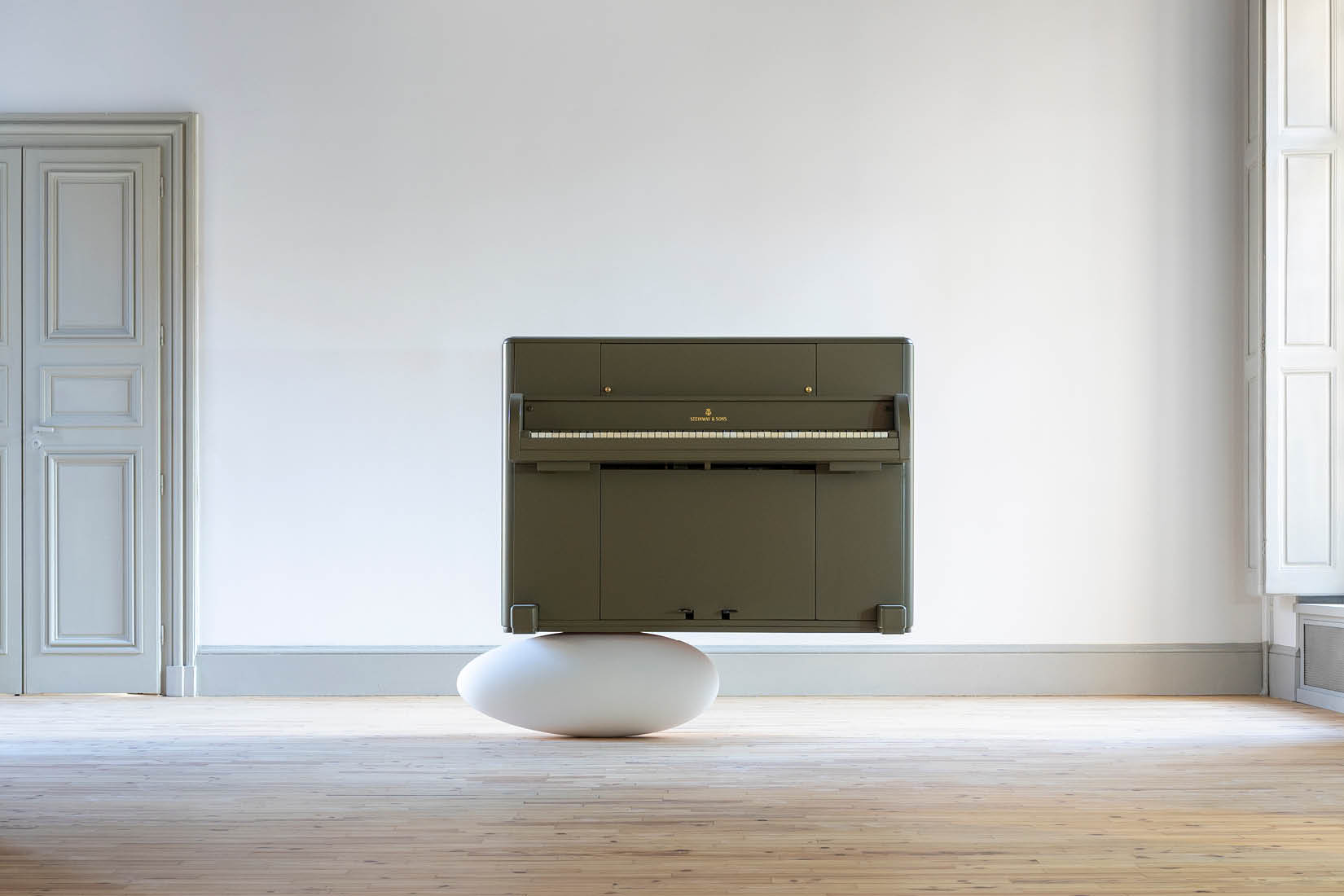At the centre of the exhibition stands the Steinway Victory Vertical (1944), a compact piano parachuted to soldiers during the Second World War. In Kiswanson’s hands, the object becomes a vessel of solace and recovery. It embodies the power of creation in the face of the ruptures of History. By exploring the language of objects, Kiswanson’s archaeology of memory gives voice to the unspeakable. Rather than reconciling the contradictions of our History, he makes them visible, underscoring their reverberations across generations and geographies. His works do not merely represent trauma – they offer a passage through it.
Kiswanson alters the scale and configuration of the space, blurring the boundary between architecture and artwork. This is particularly evident in the levitating spaces he constructs, where historically charged objects enter a state of ‘hypervisibility’ and seem saturated with meaning. His rooms within rooms function as transitional sites, linking eras, experiences and subjectivities.
A large part of the works in this exhibition were created specifically for the Institut suédois; all are being presented in France for the first time.
Curator: Sara Arrhenius
Our thanks to the Swedish Embassy in France.
Special thanks to friends and benefactors of Institut suédois for their generous support.
Useful information
Free admission, no prior reservation required.
